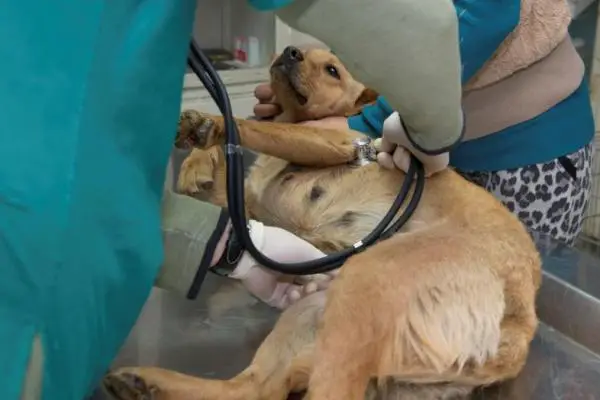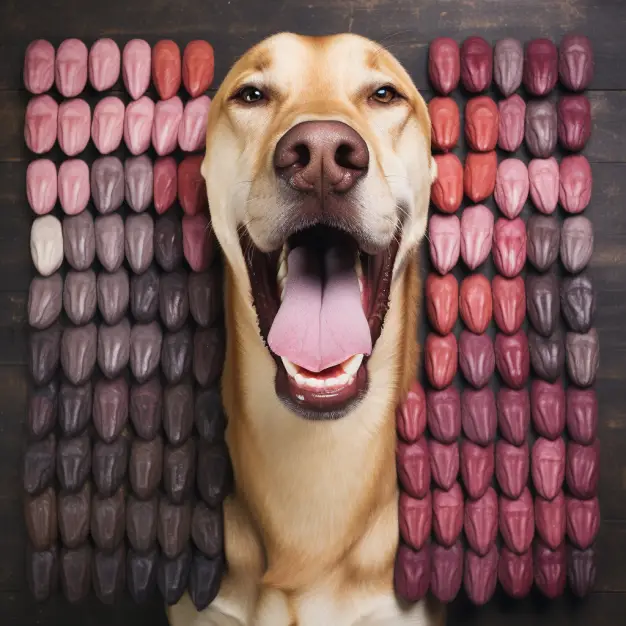Why Is My Female Dog Leaking Clear Fluid?
If you’ve noticed your female dog leaking clear fluid, it’s natural to have concerns. This guide addresses those concerns, covering normal vaginal discharge, causes of clear fluid leakage, management tips, and when to seek veterinary help.
Understanding the factors behind this issue will help you ensure your dog’s well-being.
Let’s dive in and explore this important topic together!
Key takeaways
Clear fluid discharge from a female dog’s genitals can be normal or indicate an underlying issue.
Normal vaginal discharge varies in color, consistency, and odor throughout a dog’s heat cycle.
Causes of abnormal clear fluid leakage may include urinary incontinence, vaginitis, or reproductive system disorders.
It’s important to monitor the frequency, volume, and appearance of the discharge and seek veterinary advice if there are concerning changes.
Treatment options depend on the underlying cause and may involve medications, lifestyle adjustments, or surgical intervention.
Normal Vaginal Discharge in Female Dogs
Understanding what constitutes normal vaginal discharge in female dogs is crucial to differentiate between a natural occurrence and a potential health issue. There are various types of normal discharge that you may observe throughout your dog’s life, primarily related to her reproductive cycle and postpartum period.
Types of Normal Discharge
- Estrus-related discharge: During a female dog’s heat cycle (estrus), you may notice a clear or blood-tinged fluid discharge. This is a natural process that typically lasts for two to four weeks and occurs every six months on average. The fluid discharge is a sign that your dog is in heat and may be receptive to mating.
- Postpartum discharge: After giving birth, a female dog may have a clear to reddish-brown discharge called lochia. This discharge is a mixture of blood, mucus, and uterine tissue that helps to cleanse the uterus following whelping. Lochia can last for several weeks but should gradually decrease in volume and intensity over time.
How to Identify Normal Discharge
- Color: Normal vaginal discharge in female dogs can vary from clear to slightly bloody or reddish-brown, depending on the stage of the heat cycle or postpartum period.
- Consistency: The consistency of normal discharge may range from thin and watery to somewhat thicker and mucous-like, but it should never be pus-like or foul-smelling.
- Frequency: During the heat cycle or after giving birth, it is common for a female dog to have a consistent discharge. However, the discharge should lessen in volume and eventually disappear once these periods have ended.
Monitoring Your Dog’s Discharge for Changes
As a responsible pet owner, it is essential to keep an eye on your dog’s discharge and be aware of any changes. Unusual changes in color, consistency, or odor may be indicative of an underlying issue. Additionally, if the discharge persists or worsens after the heat cycle or postpartum period, it is advisable to consult your veterinarian for further evaluation.

Common Causes of Clear Fluid Discharge
When your female dog is leaking clear fluid, it’s essential to know the potential causes. While some cases of clear discharge may be harmless or easily treatable, others may require more attention. Here, we’ll explore some of the most common causes behind clear fluid discharge in female dogs.
1. Urinary Incontinence
Causes and Risk Factors: Urinary incontinence is a condition where a dog loses control of her bladder, leading to involuntary leakage of urine. This can be caused by various factors, such as hormonal imbalances, urinary tract infections, bladder stones, or weak bladder muscles. Age, obesity, and breed can also contribute to the risk of urinary incontinence.
Diagnosis and Treatment: To diagnose urinary incontinence, your veterinarian may perform a physical examination, blood tests, and urine analysis. Treatment options may include medications to strengthen the bladder muscles, hormone therapy, or addressing any underlying health issues, such as infections or bladder stones.
2. Vaginitis
Causes and Risk Factors: Vaginitis is an inflammation of the vagina that can result in clear or cloudy discharge. Causes may include bacterial or fungal infections, foreign bodies, allergies, or trauma to the vaginal area.
Diagnosis and Treatment: Your veterinarian will likely conduct a thorough examination, take a swab of the discharge, and possibly perform blood tests to diagnose vaginitis. Treatment may involve antibiotics, antifungal medications, or anti-inflammatory drugs, depending on the specific cause. Ensuring proper hygiene and addressing any underlying causes is crucial for a successful treatment outcome.
3. Allergies
Causes and Risk Factors: Allergies, either environmental or food-related, can cause inflammation in your dog’s body, including her vaginal area. This inflammation may result in clear fluid discharge.
Diagnosis and Treatment: To diagnose allergies, your veterinarian may perform allergy tests, blood tests, or an elimination diet. Treatment options can include allergen avoidance, antihistamines, corticosteroids, or immunotherapy, depending on the specific allergy type and severity.
4. Excessive Grooming
Causes and Risk Factors: In some cases, excessive grooming or licking of the genital area can lead to clear fluid discharge. This behavior may be triggered by stress, boredom, allergies, or underlying health issues.
Diagnosis and Treatment: To determine whether excessive grooming is the cause, your veterinarian will perform a physical examination and may recommend behavioral modification techniques, stress management strategies, or treatment for any underlying health problems contributing to the behavior.

Serious Conditions Related to Clear Fluid Discharge
Although some causes of clear fluid discharge in female dogs are relatively benign, it’s essential to be aware of more serious conditions that can also present with similar symptoms. Identifying and addressing these issues promptly is crucial to ensure your dog’s long-term health and well-being.
Pyometra
Causes and Risk Factors: Pyometra is a life-threatening infection of the uterus that can occur in unspayed female dogs. Hormonal fluctuations during the heat cycle can cause the uterus to thicken, creating an ideal environment for bacterial growth. The infection can result in a build-up of pus, leading to clear or pus-like discharge.
Symptoms and Diagnosis: Signs of pyometra can include increased thirst, lethargy, vomiting, loss of appetite, and fever. Your veterinarian will perform a physical examination, blood tests, and imaging studies such as X-rays or ultrasound to diagnose the condition.
Treatment and Prevention: Pyometra is a medical emergency that requires prompt treatment. Surgical intervention, including spaying, is often necessary to remove the infected uterus. Intravenous fluids, antibiotics, and pain management may also be required. Spaying your female dog before her first heat cycle is the most effective way to prevent pyometra.
Tumors
Causes and Risk Factors: In some cases, clear fluid discharge can be a symptom of tumors in the reproductive or urinary tract. These can be benign or malignant and may result from genetic predisposition, exposure to certain chemicals, or hormonal imbalances.
Symptoms and Diagnosis: Symptoms of tumors can include changes in discharge, difficulty urinating, blood in the urine, or a visible mass. To diagnose a tumor, your veterinarian will perform a physical examination, blood tests, imaging studies, and possibly a biopsy of the affected tissue.
Treatment and Prevention: Treatment options for tumors depend on the type, location, and severity of the growth. Options may include surgical removal, chemotherapy, radiation therapy, or immunotherapy. Regular veterinary check-ups and early detection are crucial for the most favorable outcomes. Spaying your dog can also reduce the risk of certain types of tumors.
How to Manage Clear Fluid Discharge in Female Dogs
Proper management of clear fluid discharge can help maintain your dog’s health, hygiene, and comfort. By implementing the following steps, you can ensure that your dog remains clean and minimize the risk of potential complications.
Keeping Your Dog Clean and Dry
- Regularly clean your dog’s genital area with a gentle, unscented pet wipe or a damp cloth to remove any discharge and prevent irritation.
- Keep your dog’s bedding clean and dry to prevent bacterial growth and minimize odors.
- If your dog has long fur around the genital area, consider trimming it to reduce the accumulation of discharge and make cleaning easier.
Monitoring for Changes in Discharge and Behavior
- Keep a close eye on your dog’s discharge for any changes in color, consistency, or odor, as these could indicate an underlying health issue.
- Observe your dog’s behavior for signs of discomfort, such as excessive licking, scooting, or changes in her general demeanor.
- Record your observations, including dates and descriptions, to help your veterinarian in diagnosing potential issues.
Regular Vet Check-ups and Preventative Care
- Schedule regular check-ups with your veterinarian to ensure your dog remains in good health and address any concerns early.
- Discuss spaying your dog, as this procedure can help prevent certain reproductive issues, including pyometra and some types of tumors.
- Ensure your dog is up to date with vaccinations and receives appropriate preventative care, such as flea, tick, and heartworm prevention, as well as dental care.
When to Seek Veterinary Help
It’s crucial to recognize when clear fluid discharge warrants a visit to the veterinarian. Be attentive to the following signs and symptoms that may indicate a more serious issue:
Signs and Symptoms of Concern
- Discharge that is foul-smelling, green, or pus-like.
- Persistent or worsening discharge that does not improve after the heat cycle or postpartum period.
- Accompanying signs of illness, such as fever, lethargy, vomiting, or loss of appetite.
Importance of Prompt Treatment
- Early diagnosis and intervention can improve the prognosis for many health issues, prevent complications, and minimize suffering.
- Delaying treatment can lead to severe consequences, including life-threatening infections or the development of chronic health problems.
Finding a Trusted Veterinarian
- Seek recommendations from friends, family, or online reviews to find a veterinarian you trust.
- Schedule an initial consultation to discuss your concerns and determine whether you feel comfortable with the veterinarian’s approach and communication style.
By staying vigilant and proactive in your dog’s care, you can help maintain her health and well-being, ultimately ensuring a happy life together.
Frequently Asked Questions
Can stress cause clear fluid discharge in female dogs?
Yes, stress can contribute to fluid discharge in female dogs, often due to increased grooming behavior or the exacerbation of underlying conditions. Reducing your dog’s stress levels and addressing any potential stressors can help alleviate this symptom.
Is clear fluid discharge normal after spaying a female dog?
A small amount of clear fluid discharge can be normal after spaying, as long as it is not accompanied by other concerning symptoms such as fever, lethargy, or excessive swelling at the incision site. If you are concerned about your dog’s post-surgery discharge, consult your veterinarian.
Can a change in diet cause clear fluid discharge in my female dog?
A change in diet could potentially lead to clear fluid discharge if it results in an allergic reaction or causes urinary incontinence. If you suspect a dietary issue is causing the discharge, consult your veterinarian to discuss potential dietary changes and treatment options.
How can I prevent clear fluid discharge in my female dog?
Preventing clear fluid discharge is dependent on the underlying cause. Regular veterinary check-ups, a balanced diet, proper hygiene, and monitoring for changes in your dog’s behavior or discharge are essential steps in maintaining your dog’s overall health and preventing potential causes of discharge.
Final Thoughts
Clear fluid discharge in female dogs can stem from a variety of causes, ranging from normal reproductive processes to more serious health concerns.
By understanding the possible reasons behind your dog’s discharge, you can take the necessary steps to manage her hygiene, monitor for changes, and seek veterinary help when needed.
As a responsible pet owner, it’s crucial to stay informed about your dog’s health, maintain regular vet check-ups, and be proactive in addressing any issues that may arise. By doing so, you not only contribute to your furry friend’s overall well-being but also foster a strong, lasting bond between the two of you.
Remember that your dog’s health and happiness are in your hands, and taking the time to educate yourself and provide the best care possible will ensure a long, joyful life together.






